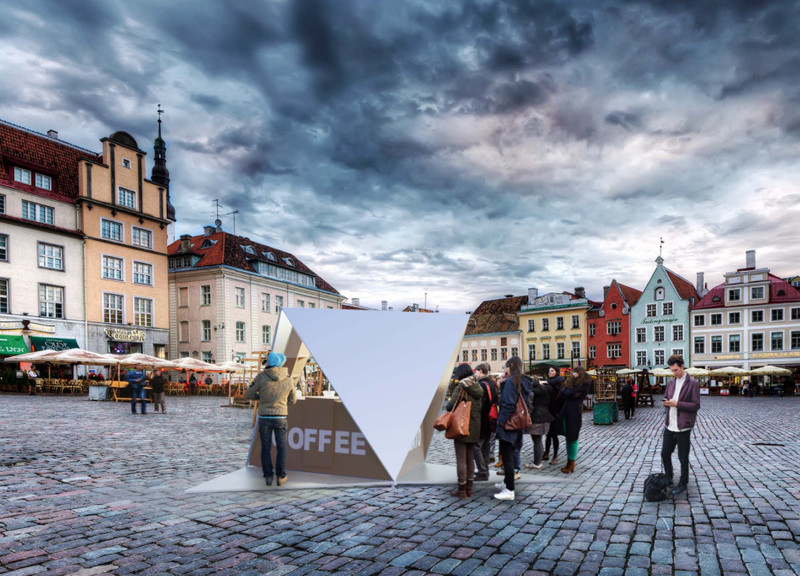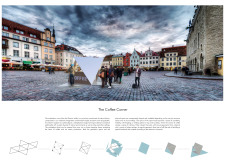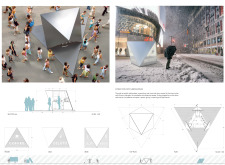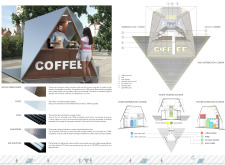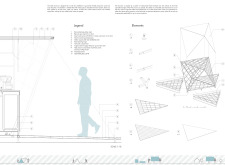5 key facts about this project
## Overview
The Coffee Corner is a mobile coffee and gelato kiosk designed with a geometric form inspired by the octahedron. Located in various public spaces such as urban plazas and parks, the structure aims to facilitate casual interaction and serve as a flexible node for social gatherings and commerce. By incorporating a dynamic design, it adapts to a range of environments, from bustling city centers to serene outdoor areas.
## Spatial Strategy and User Engagement
The pavilion's modular design emphasizes interaction with its surroundings. Its open form invites pedestrian engagement, functioning as both a shelter and a social hub. The layout includes dedicated areas for coffee preparation and gelato service, optimizing operational efficiency while fostering a welcoming atmosphere. A main distribution area is positioned for effective customer interaction and flow, ensuring a functional space that enhances the overall user experience.
### Material Selection and Sustainability
The structure utilizes a thoughtful combination of materials that prioritize sustainability and durability. Key components include:
- **Wood Fibre Panels:** Composed of 70% natural fibers, these panels are moisture-resistant and environmentally friendly.
- **Glazed Glass Panels:** These materials provide transparency and light without compromising recyclability.
- **Recyclable Steel and Aluminum:** The structural elements are made from materials that can be fully recycled, reducing the environmental impact.
- **Energy-efficient LED Lighting:** Designed to have a lifespan of up to 100,000 hours, these lights support the project's sustainability goals.
This careful selection of materials not only supports ecological responsibility but also enhances the aesthetic and functional aspects of the design, aligning with contemporary architectural trends that emphasize environmental awareness.


